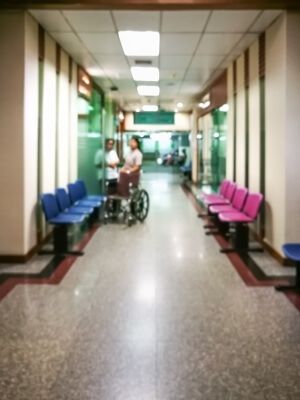
One out of twelve Americans and one out of six adults and children covered by Medicaid and the Children’s Health Insurance Program (CHIP) receive their care at health centers funded in part by the federal Health Center Program. Funding uncertainty for this program and two other federal safety net programs – the National Health Service Corps (NHSC) and Teaching Health Center Graduate Medical Education Program (THCGME) – could have long-term consequences for states and their Medicaid and uninsured populations’ access to critical health care.
Collectively, these programs support health centers and other safety net organizations that provide access to physical, behavioral, and oral health care to millions of low-income and underserved people.
Mandatory federal funding for these programs expired in 2017. Congress voted to reauthorize short-term support for these programs at reduced funding levels through March 31, 2018, as part of the Continuing Resolution passed on Dec. 21, 2017. Table 1 shows a comparison between spending in fiscal year (FY) 2017 and the current, temporary funding authorized in FY 2018 for these three federal programs.
Table 1: Comparison of FY 2017 Safety Net Program Funding and FY 2018 Temporary Funding
| Program | Scope | FY 2017 budget | FY 2018 funding authorized by the Continuing Resolution |
| Health Center Program: Health centers offer a wide array of services, including physical, behavioral, and oral health services, as well as substance use disorder treatment and recovery services. Health centers also frequently partner with social service organizations to connect patients to legal aid, food/nutrition support, patient education, and housing. | Health centers served about 26 million patients in 2016.
Health centers employ over 200,000 clinical professionals and staff. |
About $5 billion
($3.6 billion was mandatory funding from the Community Health Center Fund; $1.2 billion was discretionary funding) |
$550 million for first two quarters of FY 2018 |
| National Health Service Corps: NHSC supports medical, behavioral health, and dental professionals with loan repayment, and provides scholarships to health professions students who commit to provide primary care in low-income and medically-underserved areas across the country. | 10,000 health professionals receive loan repayment support.
1,400 health professions students receive scholarships. |
$380 million($360 million in mandatory funding; $20 million in discretionary funding) | $65 million for first two quarters of FY 2018 |
| Teaching Health Center Graduate Medical Education Program: THCGME supports primary care residency positions in low-income and medically underserved areas in 24 states. Residents are primarily placed in health centers. | More than 700 primary care residency positions. | $60 million in mandatory funding | $30 million for first two quarters of FY 2018 |
What Can States Expect?
Funding uncertainties are already impacting these health centers. Current, short-term funding for the Health Center Program and NHSC is significantly less than what these programs received for the first two quarters of FY 2017. Continued disruptions resulting from reduced or eliminated funding could exacerbate existing state safety net challenges.
- Access: Health centers that receive Health Center Program funding have an open door policy, providing services regardless of insurance status or ability to pay. States that have not expanded Medicaid may be particularly hard-hit by continued instability at health centers, some of which have already started to close clinic sites, reduce available services, limit hours, and impose hiring freezes or wage reductions. Additionally, clinical professionals may seek more financially secure positions in other settings, exacerbating health centers’ ability to recruit and retain providers.
- Opioid treatment and mental health: Health centers are an important providers working in states to tackle the opioid crisis and provide access to integrated behavioral health services. More than 6 million patients served in health centers in 2016 had a primary diagnosis of a mental health or substance use condition. Reduced capacity for these services, particularly in underserved rural areas, could undermine ongoing state efforts to expand and improve substance use and mental health treatment and recovery.
- Emergency department utilization: Reduced access to primary care and behavioral health services could drive more Medicaid and uninsured patients to seek regular care in hospital emergency departments, particularly in rural and underserved areas, increasing state Medicaid costs and hospital uncompensated care.
- Delivery system initiatives: States that have incorporated safety net providers into delivery system reform efforts (such as Section 1115 waiver’s Delivery System Reform Incentive Payment program) may find these providers have less capacity to participate in quality improvement, care coordination, and other key initiatives that can improve care and reduce costs.
- Clinical workforce: Reductions in NHSC or THCGME means health centers and other safety net providers will have fewer incentives to recruit and retain clinical professionals to work in medically underserved areas. Moreover, states that receive NHSC State Loan Repayment Grants to help support state-based incentive programs may need to shoulder more of these costs in the future.
States’ ability to provide access to care for vulnerable, low income populations depends on these safety net programs. Without Congressional action before the end of March, when the short-term funding runs out, funding for these programs will remain in jeopardy.

